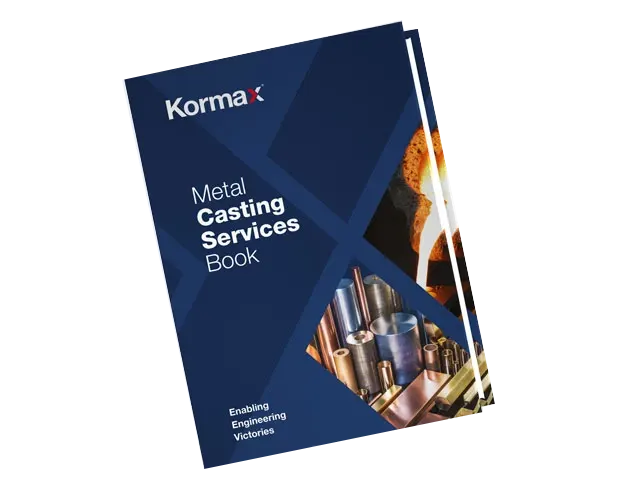In a previous blog, “The significance of experience, design, and technology in creating quality cast components”, we touched on the use of technology to ensure quality cast components. In this blog, we will look in more depth at the use of one of these technologies, methoding simulation.
When it comes to metal castings, achieving high-quality castings is paramount. Defects, like porosity, can compromise structural integrity and performance. To address this challenge, Kormax implements advanced methoding simulation software in our projects to ensure the success of the process and mold manufacturing, before production starts.
From optimizing mold filling to predicting defects, this software empowers us to enhance casting quality. In this blog post, we will explore the benefits of utilizing methoding simulation software in our foundry workflow.
Example of methoding simulation software used in a Kormax project.
Benefits of methoding simulation in designing and optimizing casting manufacturing processes:
- Accurate Mold Filling Simulation:
Methoding software enables precise virtual simulations of the entire mold filling process. By replicating the flow of molten metal, the software accurately predicts how the metal will fill the mold cavity. This level of accuracy allows foundries to optimize mold designs, ensuring uniform filling and minimizing turbulence. The result is improved casting quality and the elimination of porosity and other defects. - Optimization of Gating and Risering Systems:
The software’s capabilities extend to the optimization of gating and risering systems. These systems control the flow of molten metal and play a vital role in minimizing defects such as shrinkage. Methoding software empowers foundries to virtually test and analyze different gating and risering configurations. Through this optimization process, the foundries can identify the most efficient design, ensuring correct metal flow and minimizing the risk of shrinkage and internal void formation. - Solidification and Cooling Analysis:
Methoding software provides invaluable insights into the solidification and cooling process of castings. By accurately calculating cooling rates, solidification patterns, and thermal gradients, our foundries can identify and limit potential defects like shrinkage and porosity. With this information, foundries can optimize the casting’s heat distribution characteristics, ensuring uniform cooling and reducing the occurrence of defects. Where needed, chills can be added to promote the cooling process and apply directional solidification. By controlling the solidification process, methoding software enhances casting quality by insuring internal and structural soundness. - Predicting and Analyzing Defects:
One of the standout features of methoding software is its ability to predict and analyze potential defects in castings. By simulating various casting parameters, the software identifies areas prone to defects such as porosity, shrinkage, cold shuts, and misruns. This allows our foundries to make informed decisions in modifying the methoding design, gating systems, or process parameters to minimize or eliminate these defects. By proactively addressing potential defects, we can produce castings with reduced defects and enhanced structural integrity. - Process Optimization and Cost Reduction:
The implementation of methoding simulation software offers our customers the opportunity for process optimization and cost reduction. By performing virtual tests and analyses, we can iterate and optimize various casting parameters, methoding designs, and process parameters before physical production begins. This reduces the reliance on costly physical prototypes and minimizes trial-and-error approaches. The result is an economical, efficient casting process that minimizes costs associated with defects, scrap, rework, and material usage, while consistently delivering high-quality castings.
Incorporating methoding simulation software into the casting process brings immense benefits to our customers. From accurate mold filling simulations to optimization of gating and risering systems, this software empowers us to enhance casting quality and reduce porosity and other defects. By predicting and analyzing potential defects, we can proactively address issues and produce high-quality castings with confidence. Additionally, process optimization and cost reduction further contribute to overall efficiency and competitiveness. Finally, when coupled with our ability to perform Finite Element Analysis (FEA) on your designs, you can be assured of a high-quality casting before you have even committed to the tooling and patterns for your project. Contact our experienced team today to find out how we can add value to your project and enable your engineering victory!

